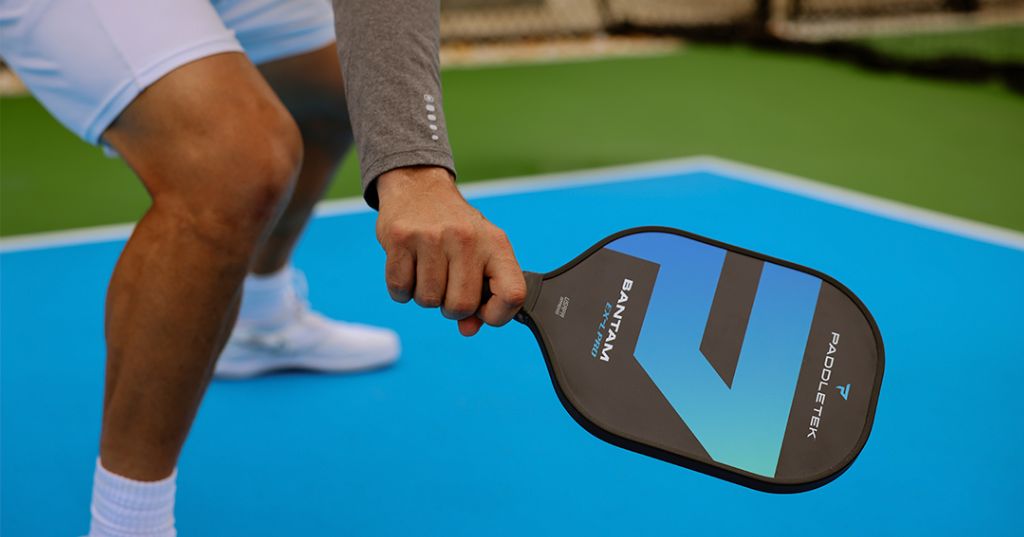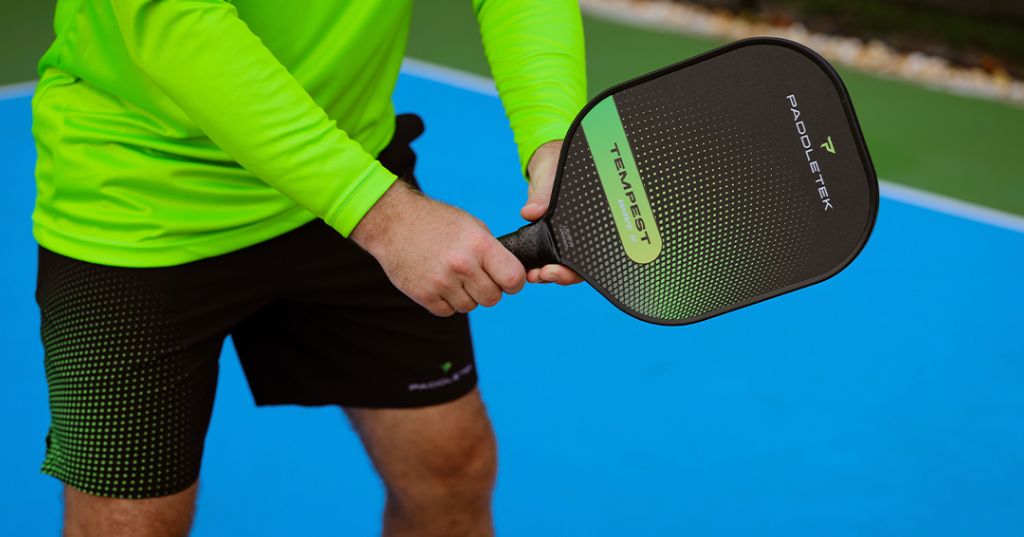In pickleball, dinking is an art of the soft game. It's an exercise in finesse, control, and patience. And that's usually where new players get tripped up. Every dink looks like an opportunity to take the rally to them.
But they aren't necessarily about trying to make an offensive shot or aggressive dinks. Truly, the goal of dinking is trying to force your opponent to make a mistake. A winning dink puts your opponent under uncomfortable pressure.
This post examines 5 of the most fundamental strategies to successfully dink, including:
- Always dink from your front.
- Clear the net with room to spare.
- Dink volley whenever you can.
- Create pressure on your opponent.
- Force a dead dink.
If you can incorporate these 5 pickleball dinking strategies into your game, you'll most likely find your opponent setting you up for an easy shot, or even better, they commit a fault. This post is going to help you take your dinking game to a stronger baseline by walking you through every nook and cranny of the 5 fundamental strategies for improving dink shots.
1. Dink in Front
This is the backbone of dinking fundamentals and essential to successfully executing any other dinking or volleying strategy. This is all about mechanics and simply put, to properly dink, you have to do so from in front of your body.
Failure to keep everything in front of your body is the quickest way to get jammed up in a dink battle, dink with your wrists, and create chicken wing shots that are surefire ways to lose a rally. So how do you make sure you dink from in front of your body?
Stance:
Stand in an athletic stance. This means being in a ready position by having both feet slightly wider than hip-width apart and slightly bending your knees and back so that you are tilted forward a bit. Standing in this position is going to keep you on the balls of your feet (literally) and improve your reaction time.
Paddle Position:
Try standing in the athletic stance around the non-volley zone line (kitchen line), act like you're throwing a ball over the net to land on your opponent's kitchen line. At the point where you would release the ball, this close to the distance your hands should be from your body, somewhere between 1 to 2 feet away from you.
Tuck your elbows in a bit, and there you have it - if you can keep your paddle here you'll successfully set yourself up to dink from in front of your body.
Swing:
Your backswing when dinking is extremely tight. If you have to reach beyond your shoulder to dink, you've gone back too far, and you are far more likely to pop the ball up.
Imagine your facing the net, and you're stretching your arms out like wings. Move your hands equally toward the net so that your body creates a right angle, where your arms are the sides. This is the ideal area you should dink from, anything beyond that is going to force you to dink from behind.
Court Position:
If you're in an exchange by the kitchen, you want to maintain your foot position. Ideally, you'll never have to step back or swing beyond your shoulder line to keep the ball in play. But on the off-chance you do have to move back, don't backpedal.
Instead, keep one foot planted and move your other foot back to make the shot, then return that foot to your initial position. Doing this will make sure you aren't giving up space and getting muscled out of the kitchen.

2. Give Dink Shot Some Room
It's a misconception that dinking well is all about barely clearing the net. Sure it's a cool party trick, but it doesn't always mean it's a great shot. Think of it this way, if you barely clear a dink over the net but the ball enters your opponent's strike zone, is it a good dink? The answer is of course no.
A good dink is all about where it lands, not about how it got there.
So why make dinking any more difficult by trying to squeeze the ball an inch above the net? This is a recipe for failure. Instead, shift that clearance up 6-12 inches, leave yourself some room for error and consider this space your dink flight zone.
To do this, you need to embrace soft hands and proper arm movement, here's how:
Soft Hands for Dinking:
Soft hands equal soft shots, and there's no better way to facilitate that than with your grip. First, make sure you're using a hammer grip - continental grip. And second, when gripping the paddle, focus on two spots of your hand doing most of the lifting - your index finger and thumb.
Think of your remaining three digits as adding stability, while your thumb and index are responsible for moving the paddle. This will force you to have softer hands, preventing you from hitting the ball hard or having too aggressive of a dink.
Hit from Your Shoulder:
Hitting with your wrist or just swinging back way too far is one of the most common mistakes with dinking. So to fight that urge, first, neutralize your wrist. To do this, keep your wrist stiff so your hand doesn't move independently.
The only part of your arm that you want to move is your shoulder. And the proper motion will be lifting the paddle by your shoulders, not bending your elbow or wrist. This will help keep the ball low, and soft, but still hit that proper one-foot clearance over the net.
3. Volley Whenever Possible
Dinking is such an instrumental part of pickleball. When playing doubles, you can guarantee dinking will be crucial to who wins and who loses.
And a dink isn't always straight on either, there are several different styles of dink shots. But one that will immediately help make your opponent feel some pressure is by taking the ball out of the air - AKA dink volley.
How does this add pressure to your opponent? Every time you volley instead of letting the ball bounce, you've reduced the time between your opponent hitting and resetting to receive the ball.
Although it could be the difference of a fractional second, that's a lifetime in a fast-moving sport. They may not have time to adjust in this instance, and it increases the likelihood of them making a mistake.
The truth is, it's extremely difficult to take a rally if you only ever dink off the bounce. Instead, make it your goal to dink volley, with your exception being off the bounce. And you shouldn't have to drop back to do this, instead, bend at the knees, and get a nice lift dink going.

4. Hit Pressure Points
You want to create uncomfortable conditions for your opponent, that's where they'll make a mistake. There are many ways to accomplish this, but push dinks are consistently tops for creating pressure.
A push dink is a more aggressive shot that lands right in front of your opponent's feet, typically in the final third of your opponent's non-volley zone. Placing your dink there creates quite a few opportunities and forces your opponent to play under significant pressure.
- Reaction Time: This gives them very little time to react, and they may not be able to reset before the ball drops.
- Distance: They will have to get low to make contact, meaning the paddle has to travel further in a shorter amount of time, which can be bad news for getting a good angle on their shot.
- Angle: Your opponent will have to go up and further to clear the net than they would level to the net's height.
To do this, you'll have to hit with a bit more firmness but still keep it soft enough for control. And remember, pushing is contextual to where your opponent is.
So if they're way off the line, a soft shot just over the net might be better. If they're a little off the kitchen line, a push dink might bounce into their strike zone. If you've been hitting it straight on or playing forehand to forehand with crosscourt dinks, that's a good time to try something different.
It's always best to mix your dinks up, you never want to be too predictable. So try to think of a push dink as your option when you have the upper hand and want to try and force an error out of your opponent.
5. Force Dead Dinks
If you think about everything we've covered so far as what to do, then naturally, creating scenarios for your opponents that make it difficult to execute a dink in that manner is going to be ideal. We call these dead dinks.
A dead dink also referred to as a weak dink, is usually made in error when a player is off-balance, jammed up, or dinking with poor form. They are layups to return and should be avoided at all costs. Facing a dead dink is the easiest way to win a rally. And in the instance where your opponent can't even muster a dead dink, then you've increased the odds of them faulting.
So, how do you force your opponent into a dead dink? Act like it's opposite day. Everything that makes your dinks amazing, creates an impossible scenario for your opponent to do the same. For example:
- Don't Allow Them to Play in Front: Certainly, avoid their strike zones, but the best tactic here is to place the ball to their sides, forcing them to move or to swing back further than they'd like.
- Create Discomfort: This is all about avoiding your opponent's strength, which will typically be their forehand. There are several ways to do this, like going for their backhand or trying to get the ball to bounce directly center to their stance. You can also dink low and try to get the ball to land as close to their feet as possible. Mix it up though - if you aim for their feet every time, you'll be easier to counter.
- Don't Let Them Hit from the Air: Try to make your opponent take a bounce so they can't decrease your reaction time to their shot. Using speed and placement, try forcing a bounce in the final third of their kitchen.
Master the Fundamentals of Dinking
If you want to be a dinking machine on the pickleball court, following these five steps will help make sure you're putting your best foot...or paddle...forward. Keep it in front of you!
And while winning isn't everything, it certainly doesn't hurt to stack the odds in your favor by gaining an understanding of the game and how to play it well. So get out there and start dinking like a pro!



Leave a comment
This site is protected by hCaptcha and the hCaptcha Privacy Policy and Terms of Service apply.